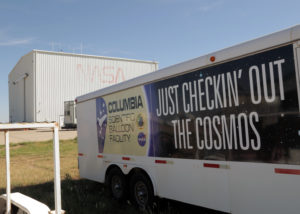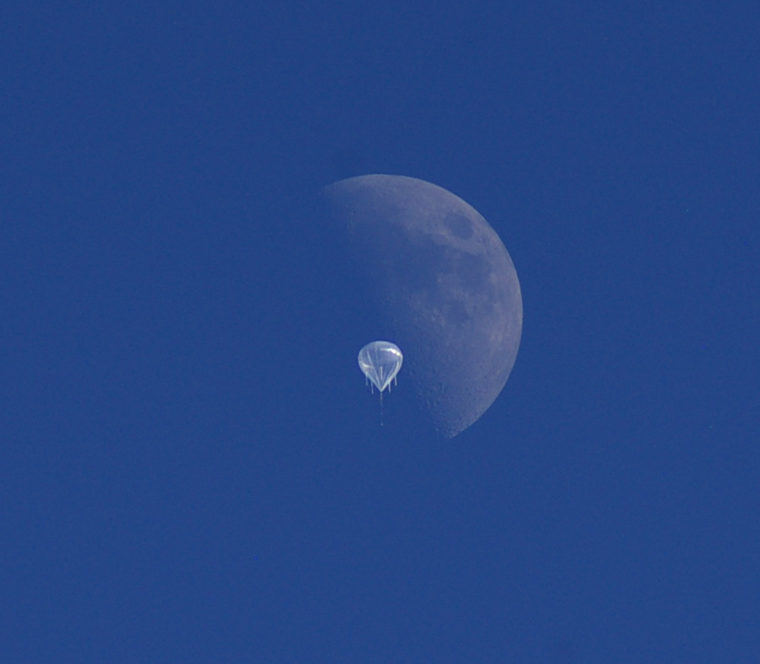X-Calibur, a novel telescope that sees polarized X-rays rather than visible or infrared light, is next in line for launch at the Columbia Scientific Balloon Facility in Fort Sumner, N.M., a tiny town best known as the site of Billy the Kid’s (alleged) grave.
Dangling in the stratosphere beneath an enormous balloon, the telescope will measure the polarization (the plane in which the electric field of the X-rays oscillates) of the high-energy X-ray emission from two black holes and two neutron stars. Changes in polarization will provide insights into black holes in binary orbits that are stealing matter from their stellar partners, as well as about conditions close to neutron stars, 10-mile-diameter objects with masses exceeding the mass of our Sun. (See the project’s main website for more.)
The telescope’s scientific team, led by Henric Krawczynski, professor of physics at Washington University in St. Louis, has been blogging for the past several weeks from Fort Sumner as they assemble and test their instrument to make sure it will perform flawlessly when a launch window opens. If you ever wanted to know what astrophysicists really do for a living (like firing X-ray guns at detectors), this is your chance to find out.
 The telescope’s mirror and detector are at either end of an eight-meter-long gondola, or truss, because that’s the separation needed to bring the X-rays into focus. Eight meters is nearly nine yards, so the truss has to be very stable to prevent the focal point from wandering.
The telescope’s mirror and detector are at either end of an eight-meter-long gondola, or truss, because that’s the separation needed to bring the X-rays into focus. Eight meters is nearly nine yards, so the truss has to be very stable to prevent the focal point from wandering.
And then there’s an even bigger problem: The entire truss has to be tilted upward to bring the telescope to bear on a distant celestial body. That’s a bit like taking a laser pointer and holding the beam steady in the middle of a penny that is 2.5 miles away. A new pointing system called WASP, contributed by the Wallops Flight Facility, is helping the astrophysicists do this with spectacular accuracy.
The game is worth the candle because the balloon will carry the telescope to 125,000 feet, above 99.7 percent of Earth’s atmosphere, the layer of light-scattering gases that blankets the Earth and makes it hard for astronomers (and astrophysicists) to see properly.
The telescope is trying to catch the “stratospheric turnaround,” a shift in high-level winds that should carry the balloon and its cargo first west, and then east. If the winds are favorable, the telescope will be aloft for 14 hours and perhaps as many as 28, in which case nobody will get any sleep.
The Columbia Scientific Balloon Facility has a high-definition web cam that will allow you to see what’s happening in the Fort Sumner hangar. Sign up to get email alerts to catch the launch itself. Once the balloon is aloft, you will be able to watch its trajectory here.
Reporters who wish to speak to Henric Krawczynski are asked to email him at krawcz@wustl.edu.

Comments and respectful dialogue are encouraged, but content will be moderated. Please, no personal attacks, obscenity or profanity, selling of commercial products, or endorsements of political candidates or positions. We reserve the right to remove any inappropriate comments. We also cannot address individual medical concerns or provide medical advice in this forum.